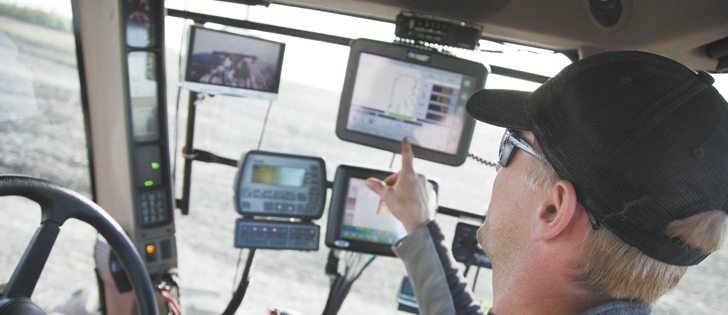Technology has made life more convenient on the farm, but fitness levels often suffer from sedentary days in the cab
MEDICINE HAT — Farmers often take better care of their livestock and machinery than themselves.
That’s the finding of Jordan Jensen, who is now in a position to help remedy that problem.
Jensen administers the Sustainable Farm Families program that operates out of the Farm Safety Centre in Raymond, Alta. The program involves farmers and their families participating in a series of workshops designed to improve their health and safety.
In Alberta, rural men have a life expectancy three years less than their urban counterparts, he said. Rural dwellers also have a higher risk of cardiovascular disease and cancer than city residents.
Read Also

Alberta cracks down on trucking industry
Alberta transportation industry receives numerous sanctions and suspensions after crackdown investigation resulting from numerous bridge strikes and concerned calls and letters from concerned citizens
Those statistics are often a surprise to participants in the workshops, said Jensen.
“We get a lot of resistance when it comes to that topic,” he said, recalling comments that the numbers are skewed and that an outdoor farm lifestyle must be healthier.
“That’s how Hollywood and the media tends to portray it, the old farmer who is 100 years old…. That’s unfortunately not the case.”
Jensen said many farmers would like to be more fit but access to fitness centres and fitness-promoting recreational activities can be limited by distance and the time needed to drive there and back.
“A treadmill is just not going to cut it all year round,” Jensen said.
Increased mechanization on farms and ranches is also a factor in declining fitness levels.
“We spend quite a bit of time talking about how technology has advanced and evolved in agriculture, both for the good and the bad, and what we’ve learned is that life has become more convenient.
“It’s a good thing but we then become used to that and we don’t do the same things to get the exercise that we need to.
“(Farmers) find that they’re just so busy, they’re so consumed with all their work that they just don’t have time or the resources to go out and get the exercise and fitness that they need.”
People are generally advised to walk about 10,000 steps per day to stay reasonably fit, but Jensen said when farmers in the workshops are given pedometers to wear on the farm, they are often surprised to find they’re only walking 3,000 or 4,000 steps in a 14-hour work day.
In his presentation to those at the Farming Smarter conference last month, Jensen said stress, long hours, lack of paid sick leave and attitudes toward health are all factors affecting farmers’ well-being.
Many dislike medical checkups or going to the hospital, preferring to treat themselves. Distance from facilities and location of the farm are additional issues.
“If a farmer has a heart attack or a stroke … oftentimes ambulances will get lost,” said Jensen.
He said prevention is preferable to treatment in any case and so far the safety centre has conducted about 36 workshops for 600 farmers. Each participant or family gets a resource kit written with farmers in mind.
The workshops are free for participants.
















